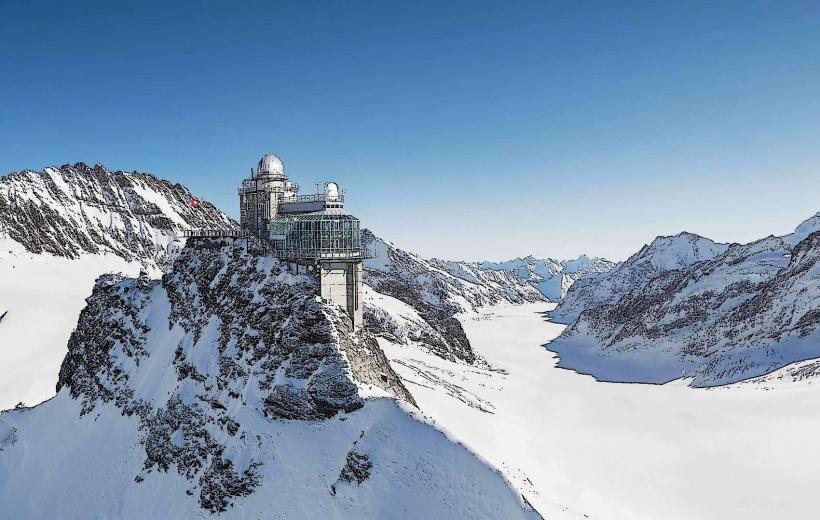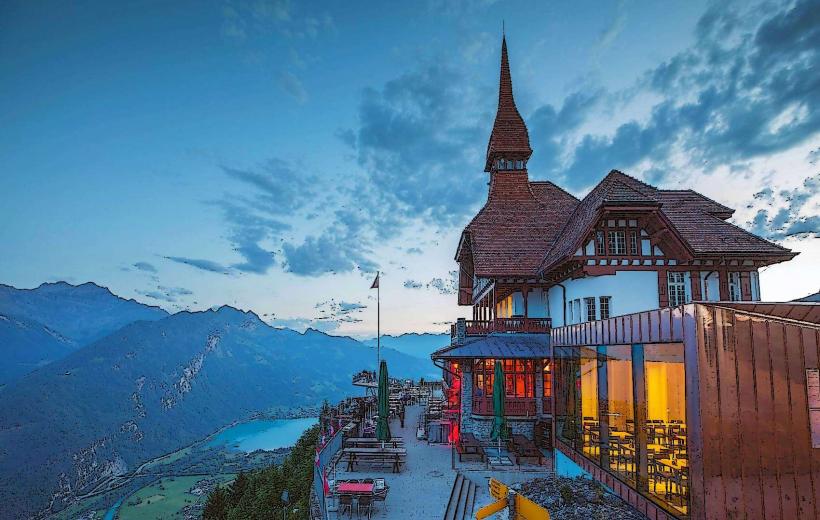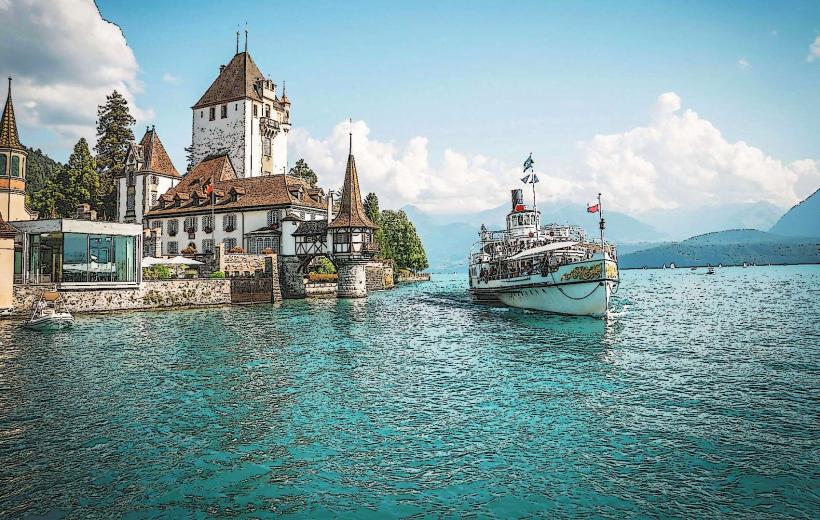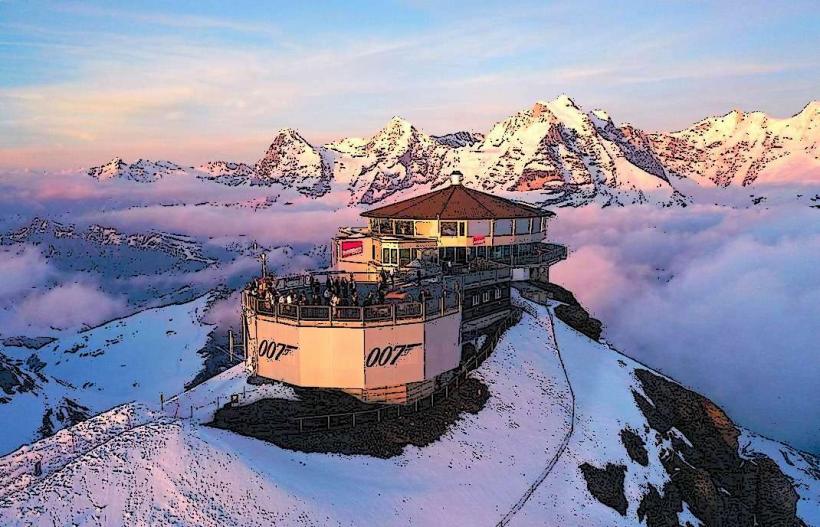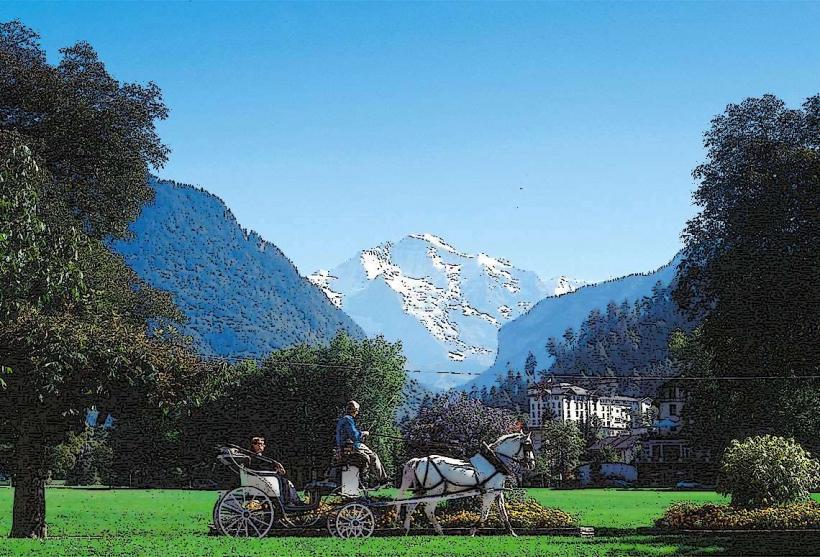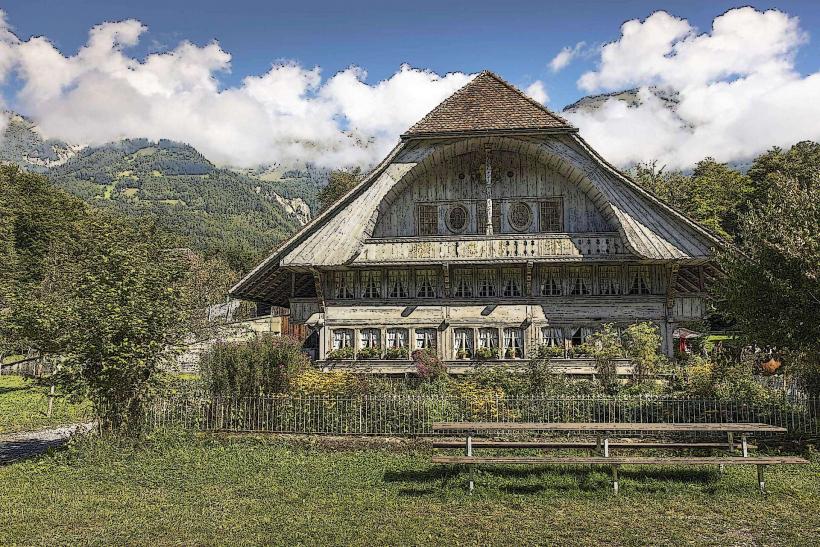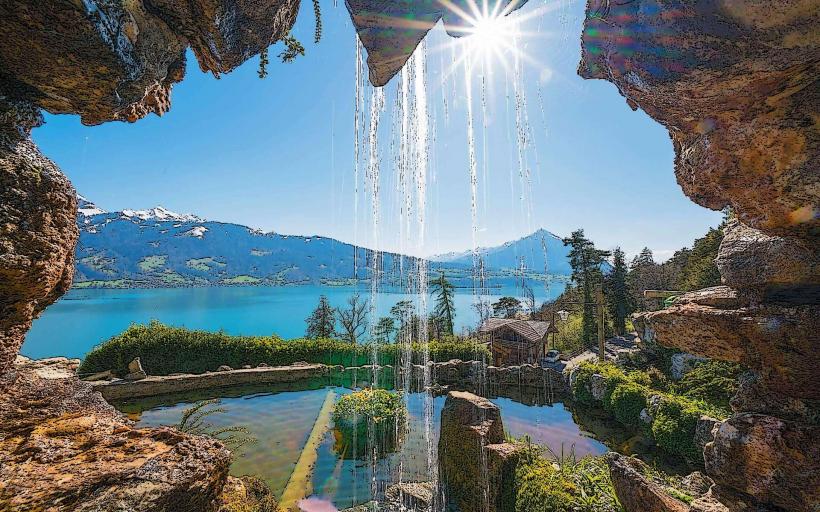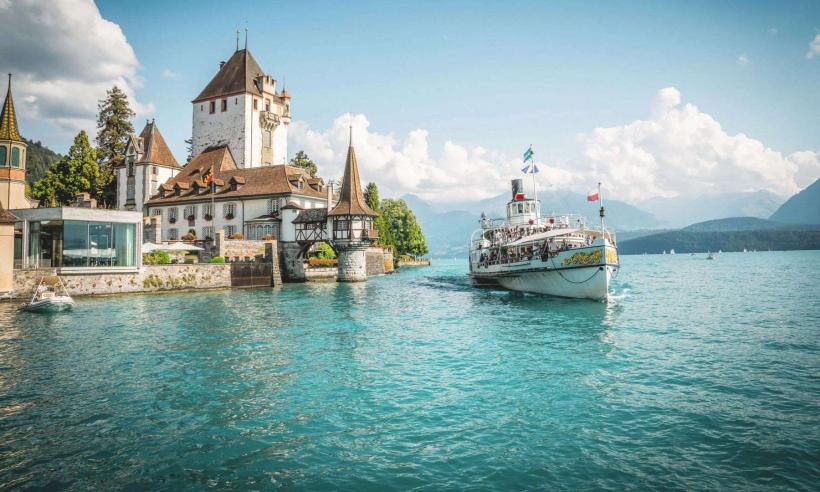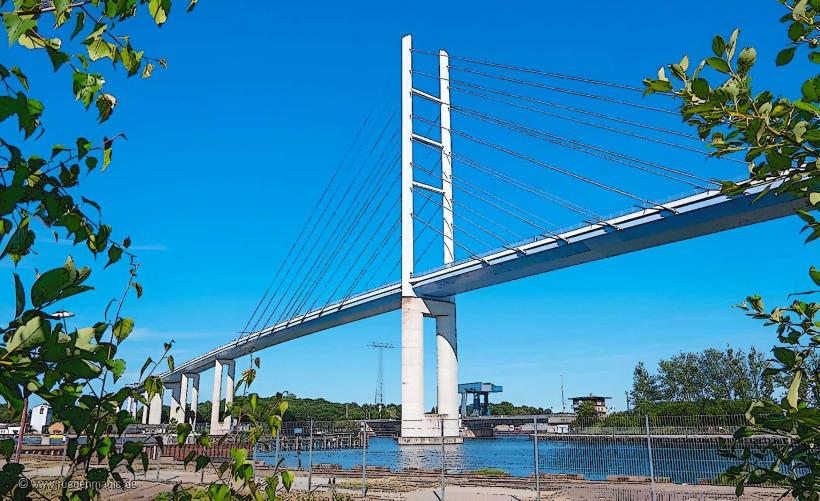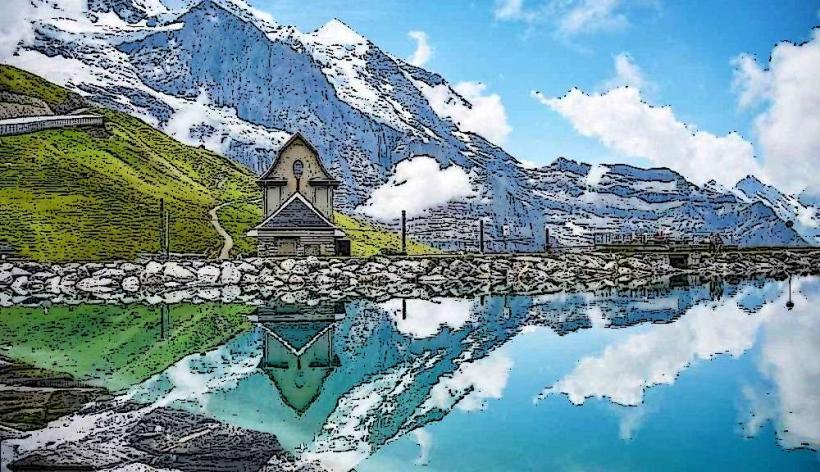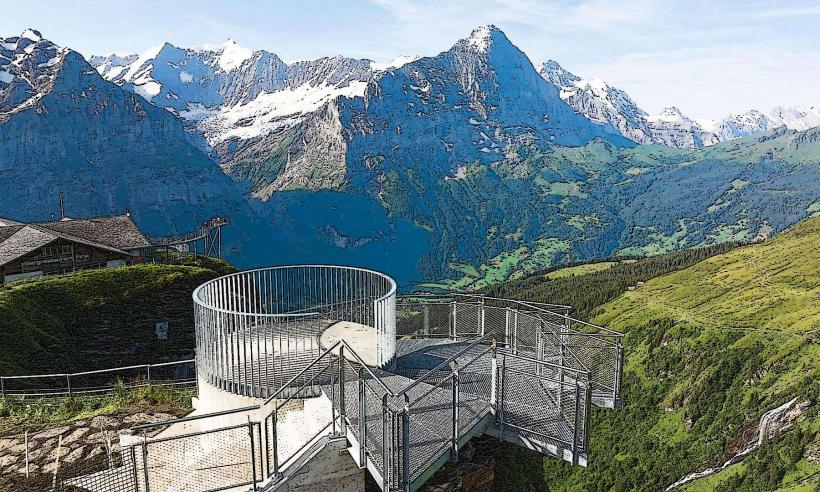Information
Landmark: Mönch MountainCity: Interlaken
Country: Switzerland
Continent: Europe
Mönch Mountain is one of the most prominent peaks in the Bernese Alps of Switzerland, standing at 4,107 meters (13,474 feet). It is part of the Eiger-Mönch-Jungfrau massif, alongside its famous neighbors, Eiger and Jungfrau, making this trio one of the most recognizable and iconic features of the Swiss Alps. Mönch, though often overshadowed by the more well-known Eiger and Jungfrau, is a crucial part of the massif and offers breathtaking views, challenging climbs, and unique alpine experiences.
Key Features of Mönch Mountain
Geography and Location
- Mönch is situated between Eiger to the north and Jungfrau to the south, forming part of the famous Jungfrau-Eiger-Mönch triangle. The mountain is located in the Bernese Oberland region of Switzerland, near the towns of Grindelwald, Lauterbrunnen, and Interlaken.
- Mönch’s location places it prominently in view of the surrounding valleys and towns, making it a central feature of the alpine landscape seen from various locations in the region, especially from the Jungfraujoch, which is nearby.
Climbing Mönch
- While Eiger and Jungfrau are often more famous for their climbing challenges, Mönch also attracts mountaineers who wish to summit a major peak in the region.
- Mönch is often regarded as a climbing peak that is more accessible than its neighbors, particularly for mountaineers with intermediate skills. The south ridge and normal route are considered less technical compared to the steep north face of Eiger, although the conditions can still be difficult.
- The summit of Mönch is usually accessed via the Jungfraujoch railway station, which is the highest railway station in Europe. From there, climbers typically use glacier routes, including a short ascent from the Mönchsjoch Hut (a mountain hut near the summit). It is recommended to attempt the climb with a guide, as weather conditions and crevasses in the glacier can make the route hazardous.
- The Mönch Glacier, which covers much of the mountain's slopes, plays a key role in the approach to the summit, and climbers must cross crevasses and icefields.
Jungfraujoch and Access to Mönch
- One of the easiest and most popular ways to reach Mönch is by traveling on the Jungfrau Railway to Jungfraujoch, the highest railway station in Europe at 3,454 meters (11,332 feet). From Jungfraujoch, climbers can access the Mönchsjoch Hut and then proceed with their ascent.
- The Jungfraujoch offers spectacular views of Mönch and the surrounding peaks. Visitors who are not climbers can still take advantage of the observation platforms and scenic routes at Jungfraujoch, offering panoramic views of the entire massif.
Panoramic Views
- The summit of Mönch provides unmatched views of the surrounding peaks, including Eiger, Jungfrau, and the Aletsch Glacier, the largest glacier in the Alps and a UNESCO World Heritage site.
- From the summit, climbers and visitors can look down into the Grindelwald and Lauterbrunnen valleys, offering a bird's-eye view of the entire region. The Aletsch Glacier and its vast icefields extend to the southeast, while the Bernese Oberland mountains rise dramatically to the north and south.
- On clear days, the view extends to Lake Thun and even as far as the French Jura Mountains.
Jungfrau Region and Its Role in Tourism
- Mönch, along with its neighboring peaks, contributes to the Jungfrau Region's popularity as one of the most famous tourist destinations in Switzerland. Visitors flock to the Jungfraujoch, the Eiger Trail, and the Mönch Glacier for both recreational and mountaineering experiences.
- For those who are not climbers, the Jungfrau region offers numerous other outdoor activities, such as hiking, skiing, snowboarding, and glacier trekking. Visitors can also enjoy scenic trains, cable cars, and aerial cableways that provide easy access to high-altitude views.
Mountain Huts and Facilities
- The Mönchsjoch Hut is the primary mountain hut for climbers ascending Mönch. Located at 3,650 meters (11,975 feet), the hut is a popular place for climbers to rest before making their final ascent to the summit. It is also accessible for visitors who want to enjoy the high-altitude environment without attempting a full climb.
- The hut offers basic alpine accommodations, meals, and shelter, providing a crucial stop for those undertaking the climb or exploring the region.
Weather and Conditions
- Like other high-altitude Swiss peaks, Mönch’s weather conditions can be highly unpredictable. Even in the summer months, temperatures on the summit can drop below freezing, and the weather can change quickly, bringing snow, fog, and high winds.
- Climbers and visitors must be prepared for the conditions, especially if they are venturing onto the glaciers or attempting an ascent. Good weather forecasts and proper gear are essential for safety in the mountain environment.
Historical Significance
- The first ascent of Mönch was made in 1857 by a team of Swiss guides. Since then, it has been a popular target for alpine climbers, although its difficult conditions and remoteness have kept it challenging.
- The mountain has remained an important part of the Swiss mountaineering tradition, contributing to the rich history of climbing in the Bernese Oberland.
Conclusion
Mönch Mountain is a striking peak in the heart of the Swiss Alps, offering both mountaineers and tourists incredible experiences. Its scenic beauty, challenging climbs, and proximity to the famous Eiger and Jungfrau make it an integral part of the iconic Swiss Alps landscape. While it may not have the fame of the nearby Eiger’s north face or Jungfrau, Mönch’s ascent still represents a significant achievement for climbers, and its views of the surrounding mountain range are some of the most breathtaking in the world. Whether you are a mountaineer seeking adventure or a visitor hoping to enjoy the stunning alpine scenery, Mönch is an unforgettable destination in the heart of Switzerland.

